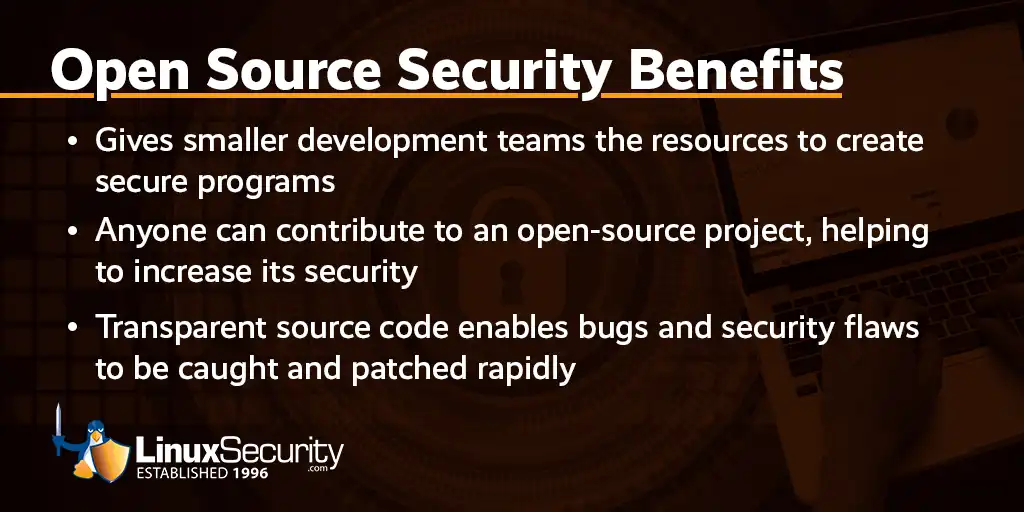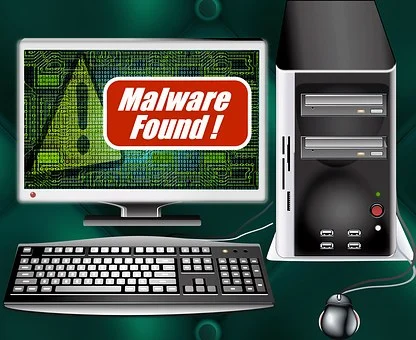History of Malware on Linux and What's Being Done to Stop It

Linux is an open-source operating system that has been popular among developers and IT professionals for its stability and security. However, over the years, Linux has faced its fair share of security threats in the form of malware. In this article, we will discuss the history of malware on Linux and what measures are being taken to stop it.
The first known instance of malware on Linux was in 1999, when a worm named “Ramen” spread rapidly through the Internet. Ramen exploited vulnerabilities in Linux systems, causing significant damage to infected machines. This was a wake-up call for the Linux community, which had previously considered the platform to be immune to malware.
In the years that followed, Linux faced numerous malware attacks, including viruses, Trojans, and spyware. The most notable of these was the “Slammer” worm, which caused widespread damage to the Internet in 2003. Slammer targeted a vulnerability in Microsoft SQL Server and was able to infect Linux systems that were running the software.
Despite the increasing threat of malware, the Linux community continued to develop and improve the security of the platform. In 2005, the Linux Kernel Security Project was launched to focus on the development of secure kernel-level code. This was followed by the launch of the Linux Malware Detect project, which aimed to provide a fast and efficient way to detect malware on Linux systems.
In recent years, the threat of malware on Linux has become more sophisticated, with attackers leveraging advanced techniques such as fileless malware and weaponized documents to compromise systems. To counteract these threats, the Linux community has continued to develop new security technologies and techniques. For example, the introduction of containers and virtualization technologies has helped to isolate systems and reduce the attack surface of Linux systems.
Top Six Malware Threats Affecting Linux Servers
Linux servers, although less vulnerable than Windows servers, are not immune to malware threats. In this article, we will discuss the top six malware threats that affect Linux servers.
SSH Brute Force Attacks
These attacks target the Secure Shell (SSH) protocol, a protocol used for remote login to a server. The attacker repeatedly tries to guess the login credentials through automated processes until they succeed. To protect against these attacks, it is recommended to implement strong passwords, limit login attempts, and use key-based authentication.
Rootkit
A rootkit is a type of malware that gives attackers unauthorized access to a server by hiding their presence and activity. This makes it difficult to detect and remove rootkits, as they often modify system files and alter the behavior of security tools. Regular system scans and updates, as well as using a host-based intrusion detection system, can help mitigate the risk of a rootkit attack.
Cryptojacking
Cryptojacking is a type of attack where the attacker hijacks the server's resources to mine cryptocurrency. This type of attack can slow down the server and consume large amounts of resources, potentially causing performance issues. Implementing software that blocks known malicious domains and IP addresses, as well as regularly updating the system, can help prevent cryptojacking attacks.
Backdoors
Backdoors are a type of malware that allows an attacker to bypass normal authentication procedures and gain unauthorized access to a server. Backdoors can be installed through various means, including exploiting vulnerabilities, phishing attacks, or through malicious software downloads. Regular system scans and updates, as well as monitoring network traffic, can help detect and prevent backdoor attacks.
Botnets
Botnets are a network of infected computers that can be controlled remotely by an attacker. They are often used to launch distributed denial-of-service (DDoS) attacks or send spam. Botnets can infect Linux servers through vulnerabilities, phishing attacks, or through malicious software downloads. Regular system updates and scans, as well as monitoring network traffic, can help prevent botnet attacks.
Web Shells
A web shell is a type of malware that allows an attacker to remotely execute commands on a server through a web interface. They are often used to carry out malicious activities, such as data theft or DDoS attacks. Web shells can be installed through various means, including exploiting vulnerabilities, phishing attacks, or through malicious software downloads. Regular system scans and updates, as well as monitoring network traffic, can help detect and prevent web shell attacks.
Linux servers are not immune to malware threats, and it is important to take steps to protect against these attacks. Implementing strong passwords, limiting login attempts, using key-based authentication, regularly updating the system, and monitoring network traffic are some of the ways to protect against these threats. It is important to be vigilant and stay informed of the latest threats, as the cybersecurity landscape is constantly evolving.
Open Source Proactive Approach to Security
The Linux community has also adopted a proactive approach to security, with the development of secure coding practices and regular security audits of the Linux codebase. In addition, the Linux Foundation hosts a range of security projects and initiatives aimed at improving the security of Linux systems.
To further enhance the security of Linux systems, the community has developed a range of security tools and utilities. These include firewalls, intrusion detection systems, and antivirus software. These tools are designed to detect and prevent malware infections, and to help administrators respond quickly to security incidents.
One of the key strategies for stopping malware on Linux is to educate users about the importance of security. The Linux community has been working hard to raise awareness of the threat of malware and to provide users with the information and tools they need to keep their systems secure. This has included the development of online resources, such as security blogs and forums, and the creation of security training programs for users and administrators.
 Is Linux More Susceptible to Malware Attacks Than Other Operating Systems?
Is Linux More Susceptible to Malware Attacks Than Other Operating Systems?
Linux has historically been considered more secure than other operating systems, such as Windows, due to its open-source architecture, which allows for a more transparent development process and easier identification of vulnerabilities. Additionally, the Linux community has a strong focus on security and promptly addresses vulnerabilities when they are discovered.
However, the popularity of Linux-based systems, such as Android, has increased the attack surface and made Linux a more attractive target for malware authors. Additionally, as with any operating system, Linux is only as secure as the practices and configuration of the individual users and organizations running it.
Overall, while Linux is less susceptible to malware attacks than other operating systems, it is still important to follow best practices for security and regularly update software to minimize the risk of an attack.
What Can Be Done to Stop Malware Attacks on Linux?
To stop malware attacks on Linux, the following steps can be taken:
- Keep software up-to-date: Regularly update the operating system and installed applications to fix vulnerabilities and prevent exploits. You can use tools such as apt-get or dnf on Debian and Red Hat based systems, respectively.
- Use strong passwords: Implement strong password policies and use unique, complex passwords to prevent brute-force attacks. You can use tools such as pam_cracklib to enforce strong password policies.

- Use anti-malware software: Install and run anti-malware software that can detect and remove malware. Examples of anti-malware software for Linux include ClamAV, Sophos Antivirus, and Malwarebytes.
- Enable firewalls: Enable the built-in firewall or install a third-party firewall to block unauthorized network access and prevent malware from spreading. Examples of firewalls for Linux include ufw, iptables, and firewalld.
- Practice safe browsing: Be cautious when downloading and installing software and avoid clicking on suspicious links or attachments. You can use browser extensions, such as uBlock Origin or NoScript, to block unwanted scripts and advertisements that could be malicious.
- Limit user privileges: Limit the privileges of users and run applications as a non-privileged user whenever possible. You can use tools such as sudo or su to run applications as a non-privileged user.
- Use a sandbox: Run applications in a sandbox environment to contain any potential malware and prevent it from affecting the rest of the system. You can use tools such as Firejail or AppArmor to create a sandbox environment for applications.
- Regular backups: Regularly backup important data to prevent data loss in case of an attack. You can use tools such as rsync or duplicity to perform backups.
These methods, along with the specific tools and applications mentioned, can help to reduce the risk of malware attacks on Linux systems. However, it's important to stay vigilant and continuously update security measures as new threats emerge.
Technologies Currently Under Development to Stop Malware Attacks on Linux
There are several technologies currently under development to stop malware attacks on Linux, including:
Machine learning
Machine learning algorithms are being developed to detect and prevent malware attacks in real-time, by analyzing patterns of behavior and identifying suspicious activity.
Applications:
- ClamAV: An open-source antivirus engine that uses machine learning to detect malware.
- OSSEC: A host-based intrusion detection system that uses machine learning to detect threats.
Containerization
Containerization technologies, such as Docker and Kubernetes, are being used to isolate applications and prevent malware from spreading across the system.
Applications:
- Docker: A popular open-source platform for building, shipping, and running distributed applications in containers.
- Kubernetes: An open-source platform for automating deployment, scaling, and management of containerized applications.
Sandboxing
Sandboxing technologies allow applications to run in a confined environment, limiting the ability of malware to access the underlying system and reducing the risk of infection.
Applications:
- Firejail: A lightweight sandboxing tool for Linux that can be used to run applications in a confined environment.
- AppArmor: A Linux security module that provides fine-grained control over application behavior and can be used to enforce sandboxing.
Virtualization
Virtualization technologies, such as virtual machines, are being used to create isolated, secure environments for running applications, reducing the risk of malware infections.
Applications:
- KVM: A full virtualization solution for Linux that can be used to create isolated virtual machines.
- VirtualBox: An open-source virtualization platform that can run multiple operating systems on a single physical machine.
Endpoint protection
Endpoint protection solutions are being developed to provide comprehensive security for devices running Linux, including anti-malware, firewall, and intrusion detection and prevention.
Applications:
- ClamAV: An open-source antivirus engine that provides endpoint protection for Linux devices.
- AIDE: A file and directory integrity checker that can detect changes to the file system and alert administrators to potential malware infections.
File-integrity monitoring
File-integrity monitoring tools are being developed to detect changes to the file system, alerting administrators to potential malware infections and helping to prevent data loss.
Applications:
- Tripwire: An open-source file-integrity monitoring tool that can detect changes to the file system and alert administrators to potential malware infections.
- OSSEC: A host-based intrusion detection system that provides file-integrity monitoring and can detect changes to the file system.
Patch management
Automated patch management solutions are being developed to make it easier to keep systems up-to-date and secure against known vulnerabilities.
Applications including yum, dnf and apt-get provide a convenient and automated way to manage software updates and security patches on Linux systems, reducing the time and effort required to keep systems secure and up-to-date. They help to stop malware attacks by ensuring that known vulnerabilities are patched, making it more difficult for attackers to exploit those vulnerabilities and gain access to systems.
These technologies are aimed at improving the security of Linux systems and reducing the risk of malware attacks, while also making it easier to manage security and ensure that systems remain protected over time.
Our Thoughts
In conclusion, the history of malware on Linux has been a story of evolution, as the Linux community has adapted to changing security threats and improved the security of the platform. Today, Linux is considered to be one of the most secure operating systems available, and the Linux community continues to work hard to keep it that way. Whether it’s through the development of new security technologies, the adoption of secure coding practices, or the education of users, the Linux community is committed to protecting Linux systems from the threat of malware.




















